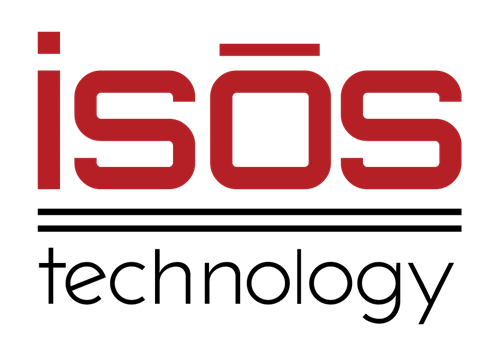 When managing operations in Fortune 1000 companies, choosing between Jira and Asana can be a critical decision. Both platforms offer unique advantages in optimizing project management processes, but which one is truly tailored to streamline operations effectively?
When managing operations in Fortune 1000 companies, choosing between Jira and Asana can be a critical decision. Both platforms offer unique advantages in optimizing project management processes, but which one is truly tailored to streamline operations effectively?
By uncovering the nuances of each tool and understanding how they align with your company's specific needs, you can pave the way for enhanced efficiency and success.
Key takeaways
- Jira excels in project tracking and customizable workflows for complex operations.
- Asana offers a user-friendly interface with excellent task management features.
- Both tools align with Agile principles, emphasizing collaboration and flexibility.
- Jira provides powerful reporting tools and seamless integrations with other Atlassian products.
- Fortune 1000 companies benefit from Jira's operational efficiency and Asana's intuitive task organization.
Jira vs Asana
In today's fast-paced business environment, effective project planning and tracking are vital for success. These tools not only aid in managing tasks, but also facilitate seamless team collaboration.
For Fortune 1000 companies, where large-scale projects are the norm, having robust project management tools is indispensable. Jira and Asana are at the forefront of providing thorough solutions that cater to the complex needs of these organizations. They offer features such as task assignment, progress tracking, deadline reminders, and centralized communication channels, all geared towards enhancing productivity and efficiency.
With Jira and Asana, teams can coordinate efforts, share documents, and communicate effectively, ensuring that everyone is aligned towards common goals. Their user-friendly interfaces and customizable workflows make them versatile tools that can adapt to the specific requirements of Fortune 1000 companies.
Understanding the landscape of project management tools
Agile methodology has revolutionized project management, shaping the landscape of tools like Jira and Asana. Understanding the key features like collaboration, customization, reporting, analytics, and integration capabilities is essential for effective tool selection.
These elements play an important role in streamlining operations and maximizing efficiency within Fortune 1000 companies.
The rise of Agile and its impact on project management
The evolution of project management tools has been greatly influenced by the principles and practices of Agile methodology. Agile methodology emphasizes flexibility, collaboration, and iterative development, allowing teams to adapt to changing requirements efficiently. This approach has revolutionized project management tools by shifting focus from rigid, long-term planning to more dynamic and responsive practices.
Agile has prompted the development of tools that support features like Kanban boards, sprint planning, and user story mapping, enabling teams to break down projects into manageable tasks and prioritize work effectively. Agile's impact on project management tools can be seen in the rise of software platforms like Jira and Asana, which are designed to align with Agile principles. These tools facilitate seamless communication, real-time updates, and transparency across projects, enhancing teamwork and productivity.
Key features to look for in project management software
Consider evaluating project management software based on key features such as collaboration, customization, reporting and analytics, and integration capabilities to enhance operational efficiency and project outcomes. When selecting a tool, prioritize collaboration to guarantee seamless communication and teamwork. Customization allows tailoring the software to your unique workflow, boosting productivity. Robust reporting and analytics features provide valuable insights to track progress and make data-driven decisions. Integration capabilities are essential for syncing with other team productivity tools and task tracking software, streamlining operations.
| Key features | Description | Example tools |
| Collaboration | Facilitates teamwork, communication, and knowledge sharing among team members | Asana, Trello |
| Customization | Allows adapting the software to fit your specific project needs and workflows | ClickUp, Monday.com |
| Reporting & Analytics | Provides detailed insights into project progress, performance, and areas for improvement | Jira, Wrike |
| Integration Capabilities | Enables seamless connectivity with other tools and platforms used within the organization. | Slack, Zapier |
The robust features of Jira
Jira offers a tailored approach for Agile teams, focusing on Scrum, Kanban, and Scrumban methodologies to support Agile processes and user stories.
Its advanced customization and workflows allow teams to tailor Jira to fit their specific needs, enhancing efficiency and organization.
With powerful reporting tools providing real-time insights through dashboards and filters, Jira enables teams to analyze data effectively and make informed decisions.
Tailored for Agile teams
Jira offers a diverse range of tools designed to support Scrum, Kanban, and Scrumban methodologies, along with robust features for managing Agile processes and user stories. Jira Software Cloud stands out in comparison to Asana, with its specialized focus on Agile methodologies, making it a top choice for Fortune 1000 companies.
Below is a table highlighting some key features of Jira for Agile teams:
| Feature | Description |
| Scrum boards | Plan, track, and manage Agile Scrum projects effortlessly |
| Kanban boards | Visualize work, limit work-in-progress, and maximize efficiency |
| Scrumban support | Combine the best of Scrum and Kanban methodologies for optimal workflows |
With Jira's emphasis on Agile methodologies like Scrum, Kanban, and Scrumban, coupled with its support for Agile processes and user stories, it provides a thorough solution for teams looking to streamline their operations and enhance productivity.
Advanced customization and workflows
Jira stands out with its advanced customization options and flexible workflows, allowing teams to effortlessly adapt the platform to meet their unique needs.
When comparing Jira vs Asana, Jira shines in its ability to create customizable workflows that align with your team's unique processes. With Jira, you can define issue types, set up custom fields, and automate changes to streamline your project management. These customizable workflows allow for greater flexibility and efficiency in how your team collaborates and tracks progress.
Teams can leverage Jira's customizable workflows to map out their specific project stages, assign tasks to team members, and set up notifications for key milestones. Whether your team follows a strict Agile methodology or a more hybrid approach, Jira's flexibility ensures that you can adapt the platform to fit your workflow seamlessly.
Powerful reporting tools
Jira equips companies with powerful reporting tools, making it easy to analyze data and uncover real-time insights through interactive dashboards and filters.
When comparing Jira vs Asana, Jira stands out for its robust reporting features that provide detailed analytics essential for Fortune 1000 companies.
Jira's reporting capabilities allow you to track project progress, identify bottlenecks, and make informed decisions promptly.
The real-time insights offered through Jira's dashboards enable you to monitor performance metrics, visualize trends, and adjust strategies on the fly.
Customizable filters in Jira empower you to focus on specific data points, ensuring that you extract the most relevant information for your needs.
Whether it's gauging team productivity, tracking issue resolution times, or evaluating project costs, Jira's reporting tools offer a comprehensive and dynamic solution for enhancing operational efficiency.
Embrace Jira's reporting functionalities to streamline operations and drive success in your organization.
Integrations with other tools
Jira offers powerful integrations with Confluence, Atlassian's collaborative platform, allowing teams to seamlessly link project plans, issues, and documents for streamlined collaboration. By integrating Confluence with Jira, you can centralize project documentation, share updates in real-time, and guarantee alignment across teams.
Additionally, Jira's integration with Bitbucket, a Git repository management system, enhances developers' productivity by linking code repositories directly to Jira issues. This integration enables developers to track code changes, manage branches, and trigger automated workflows, all within the Jira interface.
By seamlessly connecting Bitbucket with Jira, development teams can maintain a clear overview of the entire software development lifecycle, from planning to deployment.
These popular integrations with Confluence and Bitbucket significantly enhance productivity, foster collaboration, and streamline operations for Fortune 1000 companies leveraging Jira's robust features.
Exploring Asana's strengths
Asana shines in its user-friendly interface, making task management a breeze for you and your team.
With excellent task assignment and tracking features, Asana keeps everyone on the same page and boosts productivity.
Its visual project tracking tools offer a clear overview of timelines, boards, and calendar views, ensuring efficient project management.
User-friendly interface
How does Asana's intuitive design contribute to its ease of use for project management tasks?
Asana, in the domain of project management tools like Asana vs Jira or Trello vs Asana, stands out for its user-friendly interface. The platform's intuitive design simplifies the process of organizing and tracking tasks, making it easy for even new users to navigate effortlessly. With a clean layout and straightforward features, Asana enhances productivity by streamlining project workflows.
Asana's ease of use is evident in its simple task creation and assignment process. Users can quickly assign tasks, set due dates, and track progress with just a few clicks. The visual representation of tasks and timelines aids in understanding project statuses at a glance.
Additionally, the platform's collaborative features, such as comments and file attachments, foster seamless communication among team members.
Excellent task management features
With its robust task assignment and tracking functionality, Asana excels in providing users with extensive tools for efficient project management. Asana's task assignment capabilities allow team members to easily delegate tasks, set deadlines, and collaborate seamlessly. The platform's task tracking feature enables real-time updates on task progress, ensuring transparency and accountability within the team.
Below is a breakdown of Asana's task assignment and tracking functionality:
| Task management feature | Description | Benefit |
| Task assignment | Easily delegate tasks to team members | Guarantees clear responsibilities |
| Deadline setting | Set deadlines for tasks | Helps prioritize work |
| Collaboration | Collaborate on tasks in real-time | Enhances team communication |
| Progress tracking | Monitor task progress | Guarantees project stays on track |
In comparison to Jira, Asana's task assignment and tracking features provide a user-friendly experience, enhancing overall project efficiency and effectiveness.
Visual project tracking
By integrating visual project tracking features such as timelines, boards, and calendar views, Asana provides users with a thorough overview of their project progress and deadlines. Asana's visual project tracking capabilities offer a clear and intuitive way to monitor tasks, deadlines, and milestones.
Timelines in Asana allow you to visualize project schedules, dependencies, and critical paths, enabling efficient project planning and execution. Boards provide a Kanban-style view, allowing you to move tasks across different stages easily.
Calendar views offer a structured layout of tasks based on due dates, helping you prioritize and manage time effectively. When comparing Asana vs. Jira in terms of visual project tracking, Asana's user-friendly interface and customizable views make it a popular choice for teams looking to streamline operations and enhance collaboration.
With Asana's visual project tracking tools, you can stay organized, meet deadlines, and achieve project success with ease.
Direct comparison: Jira vs. Asana
When comparing Jira and Asana for streamlining operations, it's essential to look at key aspects like agility and customization, analytics and reporting, and collaboration tools.
Jira's focus on agility offers robust features, while Asana shines with its flexible task management capabilities.
Contrasting the reporting functionalities of both tools can help you determine which aligns better with your operational needs.
Agility and customization
Jira's agility-focused features enable swift adaptation, while Asana's task management offers a high degree of flexibility.
When you compare Asana vs. Jira, you'll find that Jira excels in providing customizable workflows that cater to complex project requirements. Its agile boards allow for seamless tracking and adjusting of tasks, ideal for teams needing quick responses to changing priorities.
On the other hand, Asana's strength lies in its versatile task management capabilities, accommodating various project styles with ease. Asana's user-friendly interface enhances collaboration and communication among team members, ensuring everyone stays on the same page.
While Jira focuses on agile methodologies, Asana's customizable task views and integrations suit teams looking for adaptability without strict process constraints.
Whether your company values speed and adaptability like Jira or prefers a flexible yet organized task management system like Asana, both tools offer unique strengths to streamline operations effectively.
Analytics and reporting
When comparing Jira and Asana with regards to analytics and reporting, you'll find distinct differences in their features and capabilities.
Here are three key points to keep in mind:
- Jira: Jira offers robust reporting functionalities with a wide range of customizable options. From tracking project progress to monitoring team performance, Jira provides detailed insights through various report types like burndown charts and control charts. These features can be highly beneficial for data-driven decision-making within Fortune 1000 companies.
- Asana: While Asana also provides reporting tools, its focus is more on simplicity and user-friendliness. Asana's reporting features are intuitive and easy to grasp, making them ideal for teams looking for quick overviews rather than in-depth analytics. This can be advantageous for companies that value efficiency and straightforward data presentation.
- Comparison: In the field of analytics and reporting, Jira excels in offering detailed and intricate reporting capabilities, whereas Asana shines in simplicity and ease of use. The choice between the two would depend on the specific needs and preferences of the organization.
Collaboration and communication tools
For enhancing teamwork and communication within your organization, comparing how Jira and Asana facilitate collaboration is essential.
Asana is known for its user-friendly interface that promotes seamless communication among team members. With features like task assignments, comments, and real-time updates, Asana keeps everyone on the same page, fostering collaboration effortlessly.
On the other hand, Jira offers robust communication tools tailored for larger teams, such as customizable workflows and detailed issue tracking. Jira's integration with other Atlassian products like Confluence enhances communication by allowing teams to create thorough documentation and share it directly within the platform.
While Asana focuses on simplicity and ease of use, Jira caters to complex project management needs with its extensive communication capabilities. Depending on your organization's size and project requirements, choosing between Asana and Jira can significantly impact how effectively your teams collaborate and communicate.
Lessons learned from Jira implementations
Implementing Jira successfully requires careful planning and strategic execution to maximize its benefits for your organization. When considering lessons learned from Jira implementations, it's essential to start with a clear understanding of your organization's needs and workflows.
One key insight is to involve stakeholders from different departments early on to make sure that Jira is tailored to meet various team requirements effectively.
Successful Jira deployments often prioritize thorough training sessions for all users to guarantee smooth adoption and utilization of the platform's features. Additionally, creating standardized workflows and templates can streamline processes and enhance collaboration across teams.
Regularly soliciting feedback and making adjustments based on user input is vital for maintaining a dynamic and efficient Jira environment.
Overcoming common misconceptions about Jira
Think Jira is too complicated? Let's debunk that myth. By simplifying navigation and user experience, Jira can be more user-friendly than you think.
Plus, we'll break down the cost-effectiveness of using Jira for large teams, showing you the value it brings to high-volume users.
Jira as a complex tool
Using Jira efficiently can be simplified by implementing a few user-friendly tips to enhance your experience and dispel the misconception of it being overly complex.
Here are three straightforward ways to streamline your navigation and user experience:
- Customize your dashboard: Tailor your Jira dashboard to display only the most relevant information for your tasks. This customization can declutter your interface and make it more intuitive to use.
- Utilize filters and search functions: Take advantage of Jira's powerful filtering and search capabilities to quickly locate the information you need. By mastering these tools, you can save time and reduce the perceived complexity of the platform.
- Organize tasks with labels and categories: Labeling and categorizing tasks can help you stay organized and find items easily. By structuring your tasks effectively, you can simplify your workflow and make Jira more user-friendly.
Cost-Effectiveness of Using Jira for Large Teams
For large teams, evaluating the cost-effectiveness of utilizing Jira involves a detailed examination of the value it brings to high-volume users. When pondering the cost of implementing Jira for a large team, it's vital to weigh the benefits it offers in streamlining operations, enhancing collaboration, and increasing productivity.
While there may be an initial investment required for setup and training, the long-term efficiency gains and improved project management capabilities can outweigh these costs greatly.
Jira provides a robust platform that can scale effectively to meet the needs of large teams, offering customizable workflows, advanced reporting features, and integration options that can streamline processes and enhance team communication. By leveraging Jira's capabilities for high-volume users, organizations can optimize their operational efficiency, reduce time wasted on manual tasks, and improve overall project outcomes.
When evaluating the cost-effectiveness of using Jira for large teams, it's essential to contemplate not just the immediate expenses but also the long-term value and benefits it can bring to your organization.
Conclusion: The right choice for your company
When choosing between Jira and Asana for your company, consider your team's specific needs and preferences. Evaluate factors such as project complexity, team size, and budget constraints to make an informed decision.
Making an informed decision
To make the right choice for your company between Jira and Asana, consider the specific needs and goals of your team. Each project management tool offers unique features that cater to different requirements.
Here are three key points to help guide your decision:
- User-friendliness: Take into account the technical expertise of your team members. Asana is known for its intuitive interface, making it easy for beginners to adapt quickly. On the other hand, Jira offers robust customization options, ideal for teams with more complex workflows but may require additional training.
- Scalability: Consider the future growth of your company. Asana is great for small to medium-sized teams looking to scale efficiently, while Jira's advanced capabilities make it suitable for large enterprises with intricate project structures.
- Integration capabilities: Evaluate the compatibility with your existing tools and systems. Asana provides seamless integration with a wide range of applications, whereas Jira offers extensive customization possibilities to align with specific workflow requirements.
Sign up to receive more great content
Learn more about Atlassian and how Isos can help by signing up to receive our latest blogs, eBooks, whitepapers and more.













